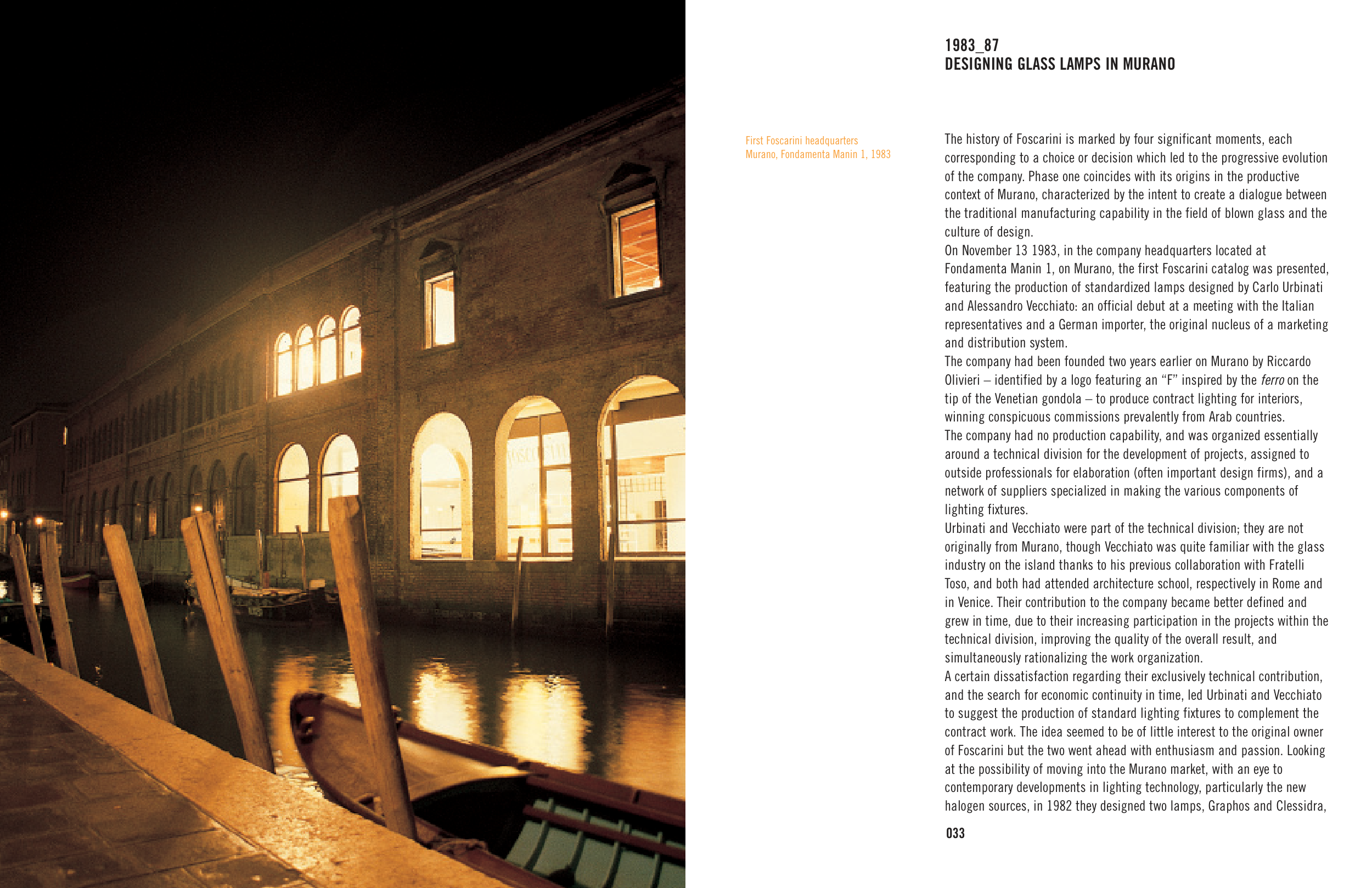033
1983_87
DESIGNING GLASS LAMPS IN MURANO
The history of Foscarini is marked by four significant moments, each
corresponding to a choice or decision which led to the progressive evolution
of the company. Phase one coincides with its origins in the productive
context of Murano, characterized by the intent to create a dialogue between
the traditional manufacturing capability in the field of blown glass and the
culture of design.
On November 13 1983, in the company headquarters located at
Fondamenta Manin 1, on Murano, the first Foscarini catalog was presented,
featuring the production of standardized lamps designed by Carlo Urbinati
and Alessandro Vecchiato: an official debut at a meeting with the Italian
representatives and a German importer, the original nucleus of a marketing
and distribution system.
The company had been founded two years earlier on Murano by Riccardo
Olivieri – identified by a logo featuring an “F” inspired by the ferro on the
tip of the Venetian gondola – to produce contract lighting for interiors,
winning conspicuous commissions prevalently from Arab countries.
The company had no production capability, and was organized essentially
around a technical division for the development of projects, assigned to
outside professionals for elaboration (often important design firms), and a
network of suppliers specialized in making the various components of
lighting fixtures.
Urbinati and Vecchiato were part of the technical division; they are not
originally from Murano, though Vecchiato was quite familiar with the glass
industry on the island thanks to his previous collaboration with Fratelli
Toso, and both had attended architecture school, respectively in Rome and
in Venice. Their contribution to the company became better defined and
grew in time, due to their increasing participation in the projects within the
technical division, improving the quality of the overall result, and
simultaneously rationalizing the work organization.
A certain dissatisfaction regarding their exclusively technical contribution,
and the search for economic continuity in time, led Urbinati and Vecchiato
to suggest the production of standard lighting fixtures to complement the
contract work. The idea seemed to be of little interest to the original owner
of Foscarini but the two went ahead with enthusiasm and passion. Looking
at the possibility of moving into the Murano market, with an eye to
contemporary developments in lighting technology, particularly the new
halogen sources, in 1982 they designed two lamps, Graphos and Clessidra,
First Foscarini headquarters
Murano, Fondamenta Manin 1, 1983


